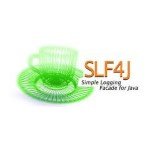MyBatis Tutorial – CRUD Operations and Mapping Relationships – Part 1
CRUD Operations
MyBatis is an SQL Mapper tool which greatly simplifies the database programing when compared to using JDBC directly.
Step1: Create a Maven project and configure MyBatis dependencies.
<project xmlns='http://maven.apache.org/POM/4.0.0'
xmlns:xsi='http://www.w3.org/2001/XMLSchema-instance'
xsi:schemaLocation='http://maven.apache.org/POM/4.0.0
http://maven.apache.org/xsd/maven-4.0.0.xsd'>
<modelVersion>4.0.0</modelVersion>
<groupId>com.sivalabs</groupId>
<artifactId>mybatis-demo</artifactId>
<version>0.0.1-SNAPSHOT</version>
<packaging>jar</packaging>
<name>mybatis-demo</name>
<url>http://maven.apache.org</url>
<properties>
<project.build.sourceEncoding>UTF-8</project.build.sourceEncoding>
</properties>
<build>
<plugins>
<plugin>
<groupId>org.apache.maven.plugins</groupId>
<artifactId>maven-compiler-plugin</artifactId>
<version>2.3.2</version>
<configuration>
<source>1.6</source>
<target>1.6</target>
<encoding>${project.build.sourceEncoding}</encoding>
</configuration>
</plugin>
</plugins>
</build>
<dependencies>
<dependency>
<groupId>junit</groupId>
<artifactId>junit</artifactId>
<version>4.10</version>
<scope>test</scope>
</dependency>
<dependency>
<groupId>org.mybatis</groupId>
<artifactId>mybatis</artifactId>
<version>3.1.1</version>
</dependency>
<dependency>
<groupId>mysql</groupId>
<artifactId>mysql-connector-java</artifactId>
<version>5.1.21</version>
<scope>runtime</scope>
</dependency>
</dependencies>
</project>
Step#2: Create the table USER and a Java domain Object User as follows:
CREATE TABLE user ( user_id int(10) unsigned NOT NULL auto_increment, email_id varchar(45) NOT NULL, password varchar(45) NOT NULL, first_name varchar(45) NOT NULL, last_name varchar(45) default NULL, PRIMARY KEY (user_id), UNIQUE KEY Index_2_email_uniq (email_id) ) ENGINE=InnoDB DEFAULT CHARSET=latin1;
package com.sivalabs.mybatisdemo.domain;
public class User
{
private Integer userId;
private String emailId;
private String password;
private String firstName;
private String lastName;
@Override
public String toString() {
return 'User [userId=' + userId + ', emailId=' + emailId
+ ', password=' + password + ', firstName=' + firstName
+ ', lastName=' + lastName + ']';
}
//setters and getters
}
Step#3: Create MyBatis configuration files.
a) Create jdbc.properties file in src/main/resources folder
jdbc.driverClassName=com.mysql.jdbc.Driver jdbc.url=jdbc:mysql://localhost:3306/mybatis-demo jdbc.username=root jdbc.password=admin
b) Create mybatis-config.xml file in src/main/resources folder
<?xml version='1.0' encoding='UTF-8' ?>
<!DOCTYPE configuration
PUBLIC '-//mybatis.org//DTD Config 3.0//EN'
'http://mybatis.org/dtd/mybatis-3-config.dtd'>
<configuration>
<properties resource='jdbc.properties'/>
<typeAliases>
<typeAlias type='com.sivalabs.mybatisdemo.domain.User' alias='User'></typeAlias>
</typeAliases>
<environments default='development'>
<environment id='development'>
<transactionManager type='JDBC'/>
<dataSource type='POOLED'>
<property name='driver' value='${jdbc.driverClassName}'/>
<property name='url' value='${jdbc.url}'/>
<property name='username' value='${jdbc.username}'/>
<property name='password' value='${jdbc.password}'/>
</dataSource>
</environment>
</environments>
<mappers>
<mapper resource='com/sivalabs/mybatisdemo/mappers/UserMapper.xml'/>
</mappers>
</configuration>
Step#4: Create an interface UserMapper.java in src/main/java folder in com.sivalabs.mybatisdemo.mappers package.
package com.sivalabs.mybatisdemo.mappers;
import java.util.List;
import com.sivalabs.mybatisdemo.domain.User;
public interface UserMapper
{
public void insertUser(User user);
public User getUserById(Integer userId);
public List<User> getAllUsers();
public void updateUser(User user);
public void deleteUser(Integer userId);
}
Step#5: Create UserMapper.xml file in src/main/resources folder in com.sivalabs.mybatisdemo.mappers package.
<?xml version='1.0' encoding='UTF-8' ?>
<!DOCTYPE mapper PUBLIC '-//mybatis.org//DTD Mapper 3.0//EN'
'http://mybatis.org/dtd/mybatis-3-mapper.dtd'>
<mapper namespace='com.sivalabs.mybatisdemo.mappers.UserMapper'>
<select id='getUserById' parameterType='int' resultType='com.sivalabs.mybatisdemo.domain.User'>
SELECT
user_id as userId,
email_id as emailId ,
password,
first_name as firstName,
last_name as lastName
FROM USER
WHERE USER_ID = #{userId}
</select>
<!-- Instead of referencing Fully Qualified Class Names we can register Aliases in mybatis-config.xml and use Alias names. -->
<resultMap type='User' id='UserResult'>
<id property='userId' column='user_id'/>
<result property='emailId' column='email_id'/>
<result property='password' column='password'/>
<result property='firstName' column='first_name'/>
<result property='lastName' column='last_name'/>
</resultMap>
<select id='getAllUsers' resultMap='UserResult'>
SELECT * FROM USER
</select>
<insert id='insertUser' parameterType='User' useGeneratedKeys='true' keyProperty='userId'>
INSERT INTO USER(email_id, password, first_name, last_name)
VALUES(#{emailId}, #{password}, #{firstName}, #{lastName})
</insert>
<update id='updateUser' parameterType='User'>
UPDATE USER
SET
PASSWORD= #{password},
FIRST_NAME = #{firstName},
LAST_NAME = #{lastName}
WHERE USER_ID = #{userId}
</update>
<delete id='deleteUser' parameterType='int'>
DELETE FROM USER WHERE USER_ID = #{userId}
</delete>
</mapper>
Step#6: Create MyBatisUtil.java to instantiate SqlSessionFactory.
package com.sivalabs.mybatisdemo.service;
import java.io.IOException;
import java.io.Reader;
import org.apache.ibatis.io.Resources;
import org.apache.ibatis.session.SqlSessionFactory;
import org.apache.ibatis.session.SqlSessionFactoryBuilder;
public class MyBatisUtil
{
private static SqlSessionFactory factory;
private MyBatisUtil() {
}
static
{
Reader reader = null;
try {
reader = Resources.getResourceAsReader('mybatis-config.xml');
} catch (IOException e) {
throw new RuntimeException(e.getMessage());
}
factory = new SqlSessionFactoryBuilder().build(reader);
}
public static SqlSessionFactory getSqlSessionFactory()
{
return factory;
}
}
Step#7: Create UserService.java in src/main/java folder.
package com.sivalabs.mybatisdemo.service;
import java.util.List;
import org.apache.ibatis.session.SqlSession;
import com.sivalabs.mybatisdemo.domain.User;
import com.sivalabs.mybatisdemo.mappers.UserMapper;
public class UserService
{
public void insertUser(User user) {
SqlSession sqlSession = MyBatisUtil.getSqlSessionFactory().openSession();
try{
UserMapper userMapper = sqlSession.getMapper(UserMapper.class);
userMapper.insertUser(user);
sqlSession.commit();
}finally{
sqlSession.close();
}
}
public User getUserById(Integer userId) {
SqlSession sqlSession = MyBatisUtil.getSqlSessionFactory().openSession();
try{
UserMapper userMapper = sqlSession.getMapper(UserMapper.class);
return userMapper.getUserById(userId);
}finally{
sqlSession.close();
}
}
public List<User> getAllUsers() {
SqlSession sqlSession = MyBatisUtil.getSqlSessionFactory().openSession();
try{
UserMapper userMapper = sqlSession.getMapper(UserMapper.class);
return userMapper.getAllUsers();
}finally{
sqlSession.close();
}
}
public void updateUser(User user) {
SqlSession sqlSession = MyBatisUtil.getSqlSessionFactory().openSession();
try{
UserMapper userMapper = sqlSession.getMapper(UserMapper.class);
userMapper.updateUser(user);
sqlSession.commit();
}finally{
sqlSession.close();
}
}
public void deleteUser(Integer userId) {
SqlSession sqlSession = MyBatisUtil.getSqlSessionFactory().openSession();
try{
UserMapper userMapper = sqlSession.getMapper(UserMapper.class);
userMapper.deleteUser(userId);
sqlSession.commit();
}finally{
sqlSession.close();
}
}
}
Step#8: Create a JUnit Test class to test UserService methods.
package com.sivalabs.mybatisdemo;
import java.util.List;
import org.junit.AfterClass;
import org.junit.Assert;
import org.junit.BeforeClass;
import org.junit.Test;
import com.sivalabs.mybatisdemo.domain.User;
import com.sivalabs.mybatisdemo.service.UserService;
public class UserServiceTest
{
private static UserService userService;
@BeforeClass
public static void setup()
{
userService = new UserService();
}
@AfterClass
public static void teardown()
{
userService = null;
}
@Test
public void testGetUserById()
{
User user = userService.getUserById(1);
Assert.assertNotNull(user);
System.out.println(user);
}
@Test
public void testGetAllUsers()
{
List<User> users = userService.getAllUsers();
Assert.assertNotNull(users);
for (User user : users)
{
System.out.println(user);
}
}
@Test
public void testInsertUser()
{
User user = new User();
user.setEmailId('test_email_'+System.currentTimeMillis()+'@gmail.com');
user.setPassword('secret');
user.setFirstName('TestFirstName');
user.setLastName('TestLastName');
userService.insertUser(user);
Assert.assertTrue(user.getUserId() != 0);
User createdUser = userService.getUserById(user.getUserId());
Assert.assertNotNull(createdUser);
Assert.assertEquals(user.getEmailId(), createdUser.getEmailId());
Assert.assertEquals(user.getPassword(), createdUser.getPassword());
Assert.assertEquals(user.getFirstName(), createdUser.getFirstName());
Assert.assertEquals(user.getLastName(), createdUser.getLastName());
}
@Test
public void testUpdateUser()
{
long timestamp = System.currentTimeMillis();
User user = userService.getUserById(2);
user.setFirstName('TestFirstName'+timestamp);
user.setLastName('TestLastName'+timestamp);
userService.updateUser(user);
User updatedUser = userService.getUserById(2);
Assert.assertEquals(user.getFirstName(), updatedUser.getFirstName());
Assert.assertEquals(user.getLastName(), updatedUser.getLastName());
}
@Test
public void testDeleteUser()
{
User user = userService.getUserById(4);
userService.deleteUser(user.getUserId());
User deletedUser = userService.getUserById(4);
Assert.assertNull(deletedUser);
}
}
Now, I will explain how to perform CRUD operations using MyBatis Annotation support without need of Queries configuration in XML mapper files.
Step#1: Create a table BLOG and a java domain Object Blog.
CREATE TABLE blog ( blog_id int(10) unsigned NOT NULL auto_increment, blog_name varchar(45) NOT NULL, created_on datetime NOT NULL, PRIMARY KEY (blog_id) ) ENGINE=InnoDB DEFAULT CHARSET=latin1;
package com.sivalabs.mybatisdemo.domain;
import java.util.Date;
public class Blog {
private Integer blogId;
private String blogName;
private Date createdOn;
@Override
public String toString() {
return 'Blog [blogId=' + blogId + ', blogName=' + blogName
+ ', createdOn=' + createdOn + ']';
}
//Seeters and getters
}
Step#2: Create UserMapper.java interface with SQL queries in Annotations.
package com.sivalabs.mybatisdemo.mappers;
import java.util.List;
import org.apache.ibatis.annotations.Delete;
import org.apache.ibatis.annotations.Insert;
import org.apache.ibatis.annotations.Options;
import org.apache.ibatis.annotations.Result;
import org.apache.ibatis.annotations.Results;
import org.apache.ibatis.annotations.Select;
import org.apache.ibatis.annotations.Update;
import com.sivalabs.mybatisdemo.domain.Blog;
public interface BlogMapper
{
@Insert('INSERT INTO BLOG(BLOG_NAME, CREATED_ON) VALUES(#{blogName}, #{createdOn})')
@Options(useGeneratedKeys=true, keyProperty='blogId')
public void insertBlog(Blog blog);
@Select('SELECT BLOG_ID AS blogId, BLOG_NAME as blogName, CREATED_ON as createdOn FROM BLOG WHERE BLOG_ID=#{blogId}')
public Blog getBlogById(Integer blogId);
@Select('SELECT * FROM BLOG ')
@Results({
@Result(id=true, property='blogId', column='BLOG_ID'),
@Result(property='blogName', column='BLOG_NAME'),
@Result(property='createdOn', column='CREATED_ON')
})
public List<Blog> getAllBlogs();
@Update('UPDATE BLOG SET BLOG_NAME=#{blogName}, CREATED_ON=#{createdOn} WHERE BLOG_ID=#{blogId}')
public void updateBlog(Blog blog);
@Delete('DELETE FROM BLOG WHERE BLOG_ID=#{blogId}')
public void deleteBlog(Integer blogId);
}
Step#3: Configure BlogMapper in mybatis-config.xml
<?xml version='1.0' encoding='UTF-8' ?>
<!DOCTYPE configuration
PUBLIC '-//mybatis.org//DTD Config 3.0//EN'
'http://mybatis.org/dtd/mybatis-3-config.dtd'>
<configuration>
<properties resource='jdbc.properties'/>
<environments default='development'>
<environment id='development'>
<transactionManager type='JDBC'/>
<dataSource type='POOLED'>
<!-- <property name='driver' value='com.mysql.jdbc.Driver'/>
<property name='url' value='jdbc:mysql://localhost:3306/mybatis-demo'/>
<property name='username' value='root'/>
<property name='password' value='admin'/> -->
<property name='driver' value='${jdbc.driverClassName}'/>
<property name='url' value='${jdbc.url}'/>
<property name='username' value='${jdbc.username}'/>
<property name='password' value='${jdbc.password}'/>
</dataSource>
</environment>
</environments>
<mappers>
<mapper class='com.sivalabs.mybatisdemo.mappers.BlogMapper'/>
</mappers>
</configuration>
Step#4: Create BlogService.java
package com.sivalabs.mybatisdemo.service;
import java.util.List;
import org.apache.ibatis.session.SqlSession;
import com.sivalabs.mybatisdemo.domain.Blog;
import com.sivalabs.mybatisdemo.mappers.BlogMapper;
public class BlogService
{
public void insertBlog(Blog blog) {
SqlSession sqlSession = MyBatisUtil.getSqlSessionFactory().openSession();
try{
BlogMapper blogMapper = sqlSession.getMapper(BlogMapper.class);
blogMapper.insertBlog(blog);
sqlSession.commit();
}finally{
sqlSession.close();
}
}
public Blog getBlogById(Integer blogId) {
SqlSession sqlSession = MyBatisUtil.getSqlSessionFactory().openSession();
try{
BlogMapper blogMapper = sqlSession.getMapper(BlogMapper.class);
return blogMapper.getBlogById(blogId);
}finally{
sqlSession.close();
}
}
public List<Blog> getAllBlogs() {
SqlSession sqlSession = MyBatisUtil.getSqlSessionFactory().openSession();
try{
BlogMapper blogMapper = sqlSession.getMapper(BlogMapper.class);
return blogMapper.getAllBlogs();
}finally{
sqlSession.close();
}
}
public void updateBlog(Blog blog) {
SqlSession sqlSession = MyBatisUtil.getSqlSessionFactory().openSession();
try{
BlogMapper blogMapper = sqlSession.getMapper(BlogMapper.class);
blogMapper.updateBlog(blog);
sqlSession.commit();
}finally{
sqlSession.close();
}
}
public void deleteBlog(Integer blogId) {
SqlSession sqlSession = MyBatisUtil.getSqlSessionFactory().openSession();
try{
BlogMapper blogMapper = sqlSession.getMapper(BlogMapper.class);
blogMapper.deleteBlog(blogId);
sqlSession.commit();
}finally{
sqlSession.close();
}
}
}
Step#5: Create JUnit Test for BlogService methods
package com.sivalabs.mybatisdemo;
import java.util.Date;
import java.util.List;
import org.junit.AfterClass;
import org.junit.Assert;
import org.junit.BeforeClass;
import org.junit.Test;
import com.sivalabs.mybatisdemo.domain.Blog;
import com.sivalabs.mybatisdemo.service.BlogService;
public class BlogServiceTest
{
private static BlogService blogService;
@BeforeClass
public static void setup()
{
blogService = new BlogService();
}
@AfterClass
public static void teardown()
{
blogService = null;
}
@Test
public void testGetBlogById()
{
Blog blog = blogService.getBlogById(1);
Assert.assertNotNull(blog);
System.out.println(blog);
}
@Test
public void testGetAllBlogs()
{
List<Blog> blogs = blogService.getAllBlogs();
Assert.assertNotNull(blogs);
for (Blog blog : blogs)
{
System.out.println(blog);
}
}
@Test
public void testInsertBlog()
{
Blog blog = new Blog();
blog.setBlogName('test_blog_'+System.currentTimeMillis());
blog.setCreatedOn(new Date());
blogService.insertBlog(blog);
Assert.assertTrue(blog.getBlogId() != 0);
Blog createdBlog = blogService.getBlogById(blog.getBlogId());
Assert.assertNotNull(createdBlog);
Assert.assertEquals(blog.getBlogName(), createdBlog.getBlogName());
}
@Test
public void testUpdateBlog()
{
long timestamp = System.currentTimeMillis();
Blog blog = blogService.getBlogById(2);
blog.setBlogName('TestBlogName'+timestamp);
blogService.updateBlog(blog);
Blog updatedBlog = blogService.getBlogById(2);
Assert.assertEquals(blog.getBlogName(), updatedBlog.getBlogName());
}
@Test
public void testDeleteBlog()
{
Blog blog = blogService.getBlogById(4);
blogService.deleteBlog(blog.getBlogId());
Blog deletedBlog = blogService.getBlogById(4);
Assert.assertNull(deletedBlog);
}
}
Reference: MyBatis Tutorial: Part1 – CRUD Operations from our JCG partner Siva Reddy at the My Experiments on Technology blog.






Come on, I hope nobody uses that instead of JPA?
Try building a RESTFul services application which contain very complex object graph structure using JPA. If you try to marshall JPA loaded proxy after it got disconnected from Session it will throw LazyLoadingExcleption, if you try to marshall JPA entity by attaching it to JPA session it will load the entire database, if you are planning to use DTO pattern and populate the necessary properties only All the BEST :-) And then take a look at MyBatis :-)
How would MyBatis solve that, besides the fact that it’s non-standard and as such, the only implementation? If you need to load a complex object graph, you’ll have to maintain it somehow. Perhaps your should not make your object graph that complex in the first place (seems it’s what you do here anyway, small object graph for which jpa is a much better choice). Perhaps you should better find the bounds of your business operations, and know when to merge and when not to end your transaction or to detach. This thing is a relic, should disappear asap instead of… Read more »
Hi, I am not going to enter into never ending debate on whether STANDARDS are important or not. Here what I am trying to say is if i load a complex object structure using Mybatis they are really POJOs, not proxies. So I can use any of the marshalling/unmarshalling tools like Jackson/xstream etc to generate XML/JSON. If some property is null it will ignore to generate the tag or generates an empty tag. Where as if i load a complex object by JPA which has lazy child collection then if i try to marshall that object it will throw LazyLoadingException… Read more »
dude, I work a company that uses mybatis, because of there are many dynamic complex query and these queries couldn’t write with JPA or CriteriaBuilder and also MyBatis support performance as well.
Hi Siva, I still confuse that can we define method in the interface which have return type boolean
example like public void insertBlog(Blog blog); into
public boolean insertBlog(Blog blog);
No, for insert/update/delete queries you can return int representing the no of rows affected by the query. You can’t return boolean.
Thank you very much for your reply
hello friend you have done very good work … i used it in my app…. thx
but i have a prob. when i open it from differ pc then it not show me onl9 to others …
and when i open it in my own pc with differ browser then it works good … please help me
Hi Siva Reddy, Thanks for your tutorial, I learned a lot. I do have some points to address, I hope you dont mind sharing it. On your Service objects( BlogService.java and UserService.java), i think these object are for actual DB execution. My concern is, how would you handle the Exceptions thrown by your JDBC driver? as far as I can see, try{} – finally{} are the only ones there. can you explain how to determine all the exceptions thrown by the driver? and is it possible to handle those? please provide a sample try{} – catch{} combination. Please reply thru… Read more »
Hi Jed,
I haven’t covered Exception handling in Service classes in the article. Yes, if you are using plain MyBatis you need to handle JDBC Exceptions using try-cach blocks. If you are using MyBatis with Spring then Spring will translate JDBC Exceptions into Spring’s more appropriate DataAccessExceptions hierarchy and they are all RuntimeExceptions. If you want to handle case-by-case then you can catch those Exceptions and take necessary action.
Hope it helps.
Hi Siva,
Thanks for this wonderful tutorial. I was trying a POC with ibatis 2 version and got stuck with some strange errors. Then wanted to switch over to ibatis. With your tutorial, i just completed it with half an hour. Thanks :) very useful
Hi Shiva, Thanks for the post. I have few questions: 1. Here you are using “UserMapper” interface to define methods and mybatis interally manage it. Can I create my own class and implement “UserMapper” ? If then how? 2. I have tried the association but some how I missed something and I have too create the properties in the same class. E.g.- If A user has 5 blogs and I have user domain class and blog domain class and I want to get the data for user A with all the blogs info then how I need to create query… Read more »
Hi, I have tried with, I am able to get the ‘schema’ value in mapper.xml file. But I am unable to get the value in mapper.xml if I tried with properties file, I mentioned this as SELECT DISTINCT col_name FROM ${schema}.table-name WHERE col_name_1=#{templateId} AND col_name_2 = #{templateVersionNum} AND col_name_3 = ‘N’ I am getting error as ” org.apache.ibatis.reflection.ReflectionException: There is no getter for property named ‘schema’ in ‘class java.lang.String” So I have tried with java side as below, Properties schemaProperties = new Properties(); schemaProperties.load(new FileInputStream(new File(Constants.PROP_FILE_PATH))); sqlSessionFactory.getConfiguration().setVariables(schemaProperties); detailsVal = sqlSessionFactory.getConfiguration().getVariables().get(“schemaName”).toString(); System.out.println(“schemaName test 2 : “+sqlSessionFactory.getConfiguration().getVariables().get(“schemaName”)+” detailsVal :”+detailsVal); In the mapper.xml… Read more »
Hi, I have tried in configuration file as, properties property name=”schema” value=”schema_dev properties I am able to get the ‘schema’ value in mapper.xml file. But I am unable to get the value in mapper.xml if I tried with properties file, properties url = “file:///fullpath/sample.properties” property name=”schema” value=”${schemaName}” properties I mentioned this as, select id=”selectTemplateStatus” resultType=”String” parameterType=”HashMap” SELECT DISTINCT col_name FROM ${schema}.table-name WHERE col_name_1=#{templateId} AND col_name_2 = #{templateVersionNum} AND col_name_3 = ‘N’ select I am getting error as ” org.apache.ibatis.reflection.ReflectionException: There is no getter for property named ‘schema’ in ‘class java.lang.String” So I have tried with java side as below, Properties… Read more »
The pom.xml is incomplete … This has turned more into a Maven configuration exercise than a MyBatis learning opportunity.
Great tutorial! Just what I needed to get a quick start with MyBatis. Thanks for your efforts putting this together.
Kevin
Is this demo available as a project to download via Git?
Good tutorial, but simplistic. What would you do if there were two tables involved.. – Table1: Employee – Table2: PayHistory Employee.id = PayHistory.employee_id Assume the requirements: Some use cases, only one of the tables has to be inserted/updated In other use cases, both tables have to be updated. For the cases where both tables are being updated, you’d follow the same pattern: 1) open session 2) get mapper for table1 3) execute for table 1 4) get mapper for table2 5) execute for table2 6) close session This would lead to lot of duplication of “get mapper, and execute” code.… Read more »
can u please provide the github link . i am little confused with the folder structure.
Great tutorial!!